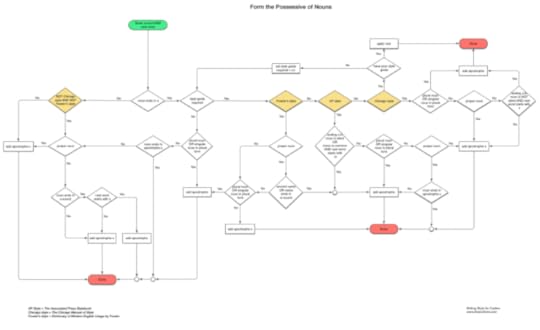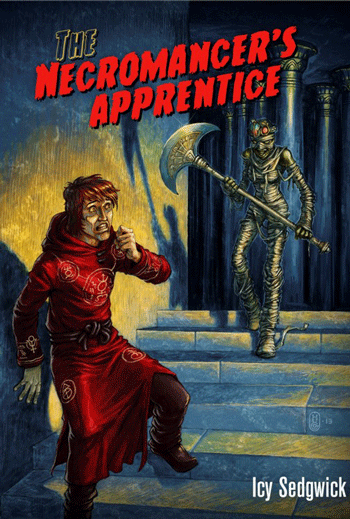David G. Shrock's Blog
June 29, 2014
The Noise Age
Databases connected on the net improve access to information and allow quicker dissemination between scholars. News delivers within minutes shared by observers, journalists weighing in within hours. Education reaches out to remote students. Employees stay connecting outside of the office. Access to information comes with a price including how to manage it.
Technology allows all of us create and share our work and art to potentially all interested. Write and publish a book, with or without a publisher (Bowker 2013 stats on self-published books). Artists try to become marketers, shouting upon millions of soap boxes and sharing related materials, trying to build platforms (Michael Hyatt, “Why you Need a Platform to Succeed”) within a giant sea of noise. Consumers wade through the noise by focusing on their niche, a section of the web. Sometimes we’re not even sure what to do with the tech, and play with, building canvases of noise (Pinterest) to pass the time, even if at the expense of the hard work of others.
In 2009, Kristine Catherine Rusch asked, “What’s Louder Than Noise?” Rusch pointed out the decline of the “Great American Novel” a book discussed by many and familiar to nearly all Americans, along with the disappearance of the “household name.” Building a brand means choosing your niche and learning how to stand out from the noise.
On the web, trolling and flaming (Urban Dictionary definitions) flourishes, and we make changes at the cost of openness as noted in “The Bullies of Goodreads” by Nathan Brandsford.
People love to make noise and respond to noise. We are not all that different from the hooting and howls of apes. Chit-chat and quick reactions take precedence over thoughtful discourse. When a person doesn’t know what to say, they often feel the need to say something, anything, and make more noise. We add to the noise, using social media services, sometimes spreading copyright infringement (Wikipedia) or ignoring ethics (Slate.com, “Facebook Unethical Experiment”).
Employees, staying connected inside and outside of the office, become distracted by noise. Some employees tweet or post on their employer’s dime (The Telegraph, “Twitter time-wasters annoy bosses”) to chat or self-promote, and an occasion express their dissatisfaction with their job or paycheck (Fireme tweet tracker), adding their ignorance to the noise. While stuck on a problem, a quick check on social media becomes a growing distraction for students (USA Today, “Students say social media interfere with homework”) robbing time from study.
Matt Gemmell points out that “Letting Go” of frequently checking email and social media results in more creativity and productivity. Before reaching the information age, we must wade through a period of uncertainty while learning to master the information.
Welcome to the noise age.
June 9, 2014
Cindy Vaskova’s The Dorley Cycle
From the start of The Dorley Cycle web-serial, Cindy Vaskova’s writing flows like a dream into a horror drenched in madness. A touch of the surreal at times, and quick jabs of horror in others, the web-serial dishes out single shots for Friday Flash stitching together a journey. The series is great for those looking to take a quick trip during lunch break, or enjoy several pages at a time.
Jackson Dee (unnamed in the first episode) returns to the fishing town of Dorley finding a mermaid caught in a fishing net on the beach. The strange sight is a reminder of the stories from childhood about the monsters in the sea. The second episode continues with a brief argument between Jackson and the mermaid about those old stories of the siren’s call. Jackson promises to let the mermaid go, insisting that he is not bad, but watches himself bash the mermaid with a rock. And so begins Jackson’s descent into horror uncovering the town’s dark secrets.
At Chapter XI, Jackson faces a monster and gets sucked inside a reality-twisted Chapter XII where he must distinguish the truth to fight his way out. And Jackson does only to find himself in a prison cell. Even weekly visitors thrown off by the warping are swept back in by the end of the episode, and a smooth follow-through for those with good memories or reading in the same sitting. I love stories that distort reality so the reader experiences the character’s struggle within the mind and the strangeness of the environment. Vaskova does a nice job. For this reason, Chapter XII episode is my favorite so far.
Vaskova tells Jackson Dee’s story from the first-person perspective. I might be more critical when reading stories in the first-person perspective, even realizing writing in first-person requires more skill, but a few tricky places bounces me from the story. Due to Vaskova’s lush, easy-going language, stumbles are rare. The story would do well as an audio narration especially with a strong voice.
As of this writing, The Dorley Cycle is unfinished at the twelfth installment, a fine time to dive in or catch up. Expect to find a few beasts with a Lovecraft flair. Due to a smattering of language, I recommend The Dorley Cycle by Cindy Vaskova for mature readers.
I prefer soaking in stories, dive in and become a part of the world, easier done with novels. Web-serials with long breaks between postings, are tougher to follow, especially ones with subtle plot twists or reality warps. When I find a good one, I go back and read through pages at a time.
After the twelfth chapter of The Dorley Cycle, I returned to read through in two trips. The episodes work fine one at a time, which is great for Friday Flash, and even better reading at my pace, munching through several pages. That was when I suggested to Vaskova on Twitter to update each page with a link to the next making it easier for new readers to follow. I highly recommended keeping web-serials updated with navigation links to avoid road blocks for readers. Contents listing without the next page links adds an extra step to navigate through. This little improvement makes a big difference, one I’m certain readers will enjoy while discovering monsters in Vaskova’s web-serial for the first time or the second.
June 4, 2014
Comments Closed
The question of disabling comments on a blog has been bouncing around for at least three years to my knowledge, and it wouldn’t surprise me if the debate started much earlier. My first reaction was that comments go with a blog post forming a discussion in one place for the community to keep up with, and closing comments would discourage discussion. Upon further thought, I realized this isn’t necessarily true.
Weeks after reading the post by author, and regular blogger, Icy Sedgwick, “Should you close your comments on your blog?” (posted in April), I gave it more thought. Sedgwick pointed out the benefit of forming a cohesive discussion without breaking it up all over social media, which is tougher to follow. I agree, especially for blogs that are more community oriented. My comment on her post was a quick response, as comments usually are, and could have benefited from more thought. I pointed out the need for a product to bridge social media services together to help form a more cohesive discussion without the reader having to do more work. At the time, I hadn’t truly yet considered the benefits of turning comments off.
Conversations are going to continue on other services or blogs anyway. They should. That’s what happens to interesting conversations. Discussions spill over into other communities and other homes.
A post linked within Sedgwick’s post, “The Argument for Keeping Those Blog Comments Open” by Deb Ng, makes the strong case of interacting with other blog readers. A few blogs have conversations. Mine do not. Ng mentions engagement. Bloggers engage with each other through their blogs, email, and social media. Comments aren’t necessary for engagement.
Some blogs have moved their comments into social media requiring an extra login or barrier. Moving comments is another matter. This is where the web needs more services bridging networks together to better connect conversations without barriers.
On Sedgwick’s post, validation comes up as a benefit of having comments. The commenter acknowledges reading the post, and the blogger knows someone read it and cared enough to respond. I agree, and I like comments. However, my sites get far more visitors than comments. Kandy Fangs sees regular traffic from several reader sites including Friday Flash and Webfiction Guide, and occasionally the stats will show a visitor reading every single episode over several hours without commenting. That stat encourages me to write more, and it’s validation that an anonymous reader truly enjoyed my stories.
Two of the best responses to my stories I have ever received were on Twitter, and provided the same validation, but more openly. A recent tweet by Miss Alister linking to my story is an example. Very much appreciated.
Consider this: a comment doesn’t necessarily mean the reader cared all that much. Some bloggers comment for more selfish reasons such as SEO linking, a comment-back out of belief it improves their platform, or for simple back-slapping community support. I suppose much the same could be said about face-to-face conversations. Some just like to talk.
I refer to back-slapping in response to a comment by Jason Coggins on a Kandy Fangs episode (bold my emphasis):
This series is a tour de force and in this age of mutual internet back-slappery I really do mean it when I say I can’t wait to read Kandy Fangs in a collection somewhere. The memory-thief concept has turned the vampire shtick on its head…
Coggins summed up how I feel about many comments I have read on fiction posts. It seems like the majority in the writing community are just patting each other on the back. Naturally, Jason felt the need to try to convey he truly meant he enjoyed my story.
I occasionally find myself leaving less thoughtful responses, and I feel bad about it. Sometimes I leave a comment just to show I liked a post, which accomplishes nothing more than a like or share button. I’d like to do better.
Back in 2011, another writer and blogger, Matt Gemmell, posted a very thoughtful response to this topic and his decision to close comments on his blog. Two reasons he gave stand out. “Comments encourage unconsidered responses” and “comments on the web don’t contribute very much.” As a software builder of social media data mining and analytics, I can confirm that the vast majority of comments on blogs contribute next to nothing. There are a few blogs where good conversations are happening, generally ones on academic topics or established community blogs. This means readers shouldn’t waste their time reading comments, and many don’t leading to a non-community, or a group of back-slapping talking heads trying to help each other feel better.
Gemmell links back to several other well written posts on the same topic. One is by John Gruber on Daring Fireball where Gruber makes fine points in second half of his post under, “regarding using submitted comments” ending with the slammer:
Comments, at least on popular websites, aren’t conversations. They’re cacophonous shouting matches.
I stopped reading comments on mainstream sites, but I may read editor’s picks if the site includes them. Gemmell followed up his decision pointed out that the quality of responses to his posts have improved after turning off the comments. In this case, closing comments didn’t discourage conversation.
If bloggers form a community by linking to each other’s posts with thoughtful responses, they gain both SEO benefits and an improved community encouraging readers to follow the conversation and discover new blogs. Posting a more complete response on your blog includes your followers in the conversation, opening to a greater audience.
When I have something I truly want to say or care about, I blog it. When I started blogging in 2009, I rarely commenting and more often posted responses to other blog posts too long for a comment box. In 2009, I posted a response to an essay by Geoffrey K. Pullum criticizing Strunk & White’s The Elements of Style. Other bloggers responded as well, and several of us linked our posts together without comments, extending the conversation. You’ll see I added a list of links to several other blog posts at the bottom, too. I want to return to posting and reading more meaningful discussions.
Another reason I closed comments is to save time. On at least two occasions, my comments system have broken going unnoticed until someone tweeted me. It’s irritating to try to comment, the comment doesn’t go through, or I post twice because I can’t tell if the comment went through. Comments slow the site down. Spam isn’t an issue. Akismet spam service combined with prior-comment moderation prevents all spam with very little effort. I’m fairly certain no one comes to my sites to read the comments, so why waste reader time? Perhaps quick responses are better off in public forums where others will see and join in, even if disconnected.
With so much noise in today’s world, both writers and readers could use more time to create and enjoy creations.
Kandy Fangs is entirely my fiction without discussion. The best reason for comments I see for a fiction site is a choose-your-own-adventure style where the readers decide. Otherwise, readers can share their appreciation or criticism in their own way. The majority of fiction readers want the site to load fast and be easy to navigate. And the fiction pages appear better without the extra clutter at the bottom.
I appreciate your feedback, and even better, I enjoy reading your thoughtful posts. If I receive a great response on social media that really adds to the discussion, I may update the post (or follow up with another) with a link and quote for others to follow.
You may respond in the following ways:
Write a response on your blog. I may link to your thoughtful response, so readers may choose to follow and learn more than possible in a tiny comment box. And I’d love to read your post.
Just want to say you like my story? Share, “like” or retweet. Or buy my book.
Review my Kandy Fangs fiction on community sites like Webfiction Guide.
Respond by tweeting at me (@dracotorre) or commenting on g+ (+DavidGShrock) publicly. If you only have something quick and short to say, a tweet is perfect.
Send me email. Public sharing is better, but if you have something more private to say, or don’t use social media services, then email is the way to. (I also have a form on my bio page.)
May 20, 2014
Unlocking the Apostrophe in Style
Writing Style for Coders series offers writing tips and explores the reasons, because engineers want to know why.
Forming the possessive of nouns can be one of the more confusing rules in writing when it comes to words ending with s. Besides differences with plural and a few exceptions, the answer depends on who you ask.
To form possessive singular of noun, add ‘s
Augustus’s favorite book is Code Complete by McConnell.
The vampire’s fangs sank into the duchess’s neck.
Read Aaron Hillegass’s book on iOS programming.
The debris’s cloud smothered the ship.
This is the first rule appearing in The Elements of Style by Strunk and White, and according to the text there are exceptions for ancient proper names ending in -es and -is such as Moses’ laws, and “such forms as for conscience’ sake, for righteousness’ sake.“
One could avoid uncertainty by removing the need for an apostrophe as in laws of Moses.
To form possessive plural of noun, if noun ends in s then add apostrophe only, else add ‘s
The students’ questions were about GPU performance.
The women’s room is closed.
The Obamas’ reside in the White House.
I’ve seen writers leaving off the extra s such as, Dickens’ novel or Kansas’ laws. Are they right?
Notice that Strunk and White’s rule fits speech. It’s (nearly) common to pronounce an extra s when saying, Dickens’s novel, but not when saying, for righteousness’ sake, which becomes a tongue-twister when adding an extra s. However, pronunciation of Kansas’s laws may cause some stumbling, but not as bad as Kansas’s schools. Style guides try to take pronunciation into account resulting in exceptions and different approaches. For instance, Pocket Fowler’s Modern English Usage suggests for proper names to defer to common pronunciation such as Dickens’s book, Bridges’ film, or Mars’ moons. Mars follows the ancient name rule, and Bridges follows the ends in iz-sound rule.
According to “Apostrophe Catastrophe (Part 2)” by Mignon Forgarty aka Grammar Girl, the rule on forming possessive singular of nouns comes down to a style issue. The Associated Press Stylebook recommends leaving off the extra s for proper nouns. The Chicago Manual of Style allows for either way, but prefers adding ‘s.
The different style guides disagree on the exceptions, too. Take a glance at this post on AP vs Chicago (find the contradiction in the examples for bonus points) showing the differences between The Associated Press Stylebook and The Chicago Manual of Style on using apostrophes such as for appearance’ sake vs for appearance’s sake. My flowchart at the bottom covers this and more.
What about a company name that includes an apostrophe? Some style guides don’t cover this, but I think McDonald’s’ (McDonald’s’s) looks strange and sounds silly.
Exception: if common noun ends with s AND next word begins with s, add apostrophe only
For goodness’ sake, include comments in your code.
The vampire bit into the duchess’ sleeve.
Dickens’s story is excellent.
Exception: if proper noun already ends in ‘s then leave it
McDonald’s profit climbed six percent last quarter.
Follow your required style guide and be consistent
Journalists, including some bloggers, generally follow The Associated Press Stylebook. Some organizations have their own. The Chicago Manual of Style or Modern Language Association (MLA) are often used among software developers writing journals or textbooks. If you are required to follow a specific style then review the guide, but be aware that different versions of the same guide may disagree with each other.
Flowchart of how to form the possessive of nouns
This handy flowchart illustrates how confusing using apostrophes can become due to different style guides and exceptions. Included in the flowchart are The Chicago Manual of Style (Chicago style), The Associated Press Stylebook (AP style), and Dictionary of Modern English Usage (Fowler’s style). For MLA, follow Chicago style.

Note that The Chicago Manual of Style has dropped the exception on proper names ending in a z-sound as in Bridges’ film, allowing both styles, but prefers Bridges’s film.
Coders, go write software to check your work for correct apostrophe usage.
April 29, 2014
A2Z Postmortem
Facing two self-inflicted challenges for April, I came up doughnuts. Truth is, the real challenge was to test if I was ready to handle a normal forty-hour work week. In short, for seven month’s I’ve been off work to recover from a long-term illness in which the recovery can drain substantial energy. At the end of March, I was feeling much stronger so I wanted to test my readiness for regular work.
I gave the A-to-Z Blogging Challenge a shot, posting fiction as blogged by Nine Thyme at Kandy Fangs. I didn’t complete the challenge, but I learned good things.
Quality counts
Reading many different blogs this month has reinforced the importance of quality over quantity. Some blogs were too obvious in writing ahead of time, some posts too generic, and many poorly written. I wasn’t happy with the quality of several of my posts. Quality tends to drop with increasing quantity. I believe I would have followed more blogs if I had come across them in other months.
Unless you are a full-time blogger, forget daily posting. Put your best work out there.
Tips for bloggers (looking at you, Blogger users)
Make it easy to follow your blog. Provide a button, even a simple RSS link. If you use G+ or Twitter, supply a link. I find email follow clumsy, but I added an email subscribe to my blogs anyway.
Turn off that CAPTCHA! It doesn’t protect you from all spam since some bots beat CAPTCHA better than humans. Annoying your visitors is rarely a good idea. Simple moderation and running comments through spam service is more than enough.
Please think carefully before posting a writing tip. Are you showing us a new perspective that isn’t already covered? There are too many blogs (and books) on writing. Consider how you can stand out. My observation could very well be swayed by A-to-Z, but consider my previous point on quality.
Read more.
Fiction bloggers: read more fiction
Fiction struggles on blogs, and I primarily write fiction, which could explain my low comment-back counts from other A-to-Z participants. I found a handful of blogs on the A-to-Z list writing fiction, and I enjoyed reading them. However, very few of the A-to-Z fiction writers reciprocated my comments. So, I felt less incentive to return. I find the same on TuesdaySerial and webfictionguide.com; far more writing than reading. Perhaps if fiction bloggers did more reading, fiction blogging might become more popular. Just a thought.
A-to-Z is not for me
By letter, P, I had become completely exhausted, not surprising given how hard I had been pushing. Counting all my blogs, I had already surpassed 26 posts for the month on the 19th. I also felt a little down about the low participation from the A-to-Z crowd. Comment-backs to my blogs were very low, but the FridayFlash crew spoiled me five years ago. The majority of comments on my posts were from previous visitors and FridayFlash participants.
I enjoyed reading many blogs, but I could have done the same without participating while focusing on writing better, less frequent posts.
My April stats for fun and observation
Post count (total / A-to-Z): 29 / 19
Most popular posts: Guest Post: Icy Sedgwick and Vampires on the Mind – Old Thyme #3
Mosts visitors arrived via search engines followed by Twitter
Number of visitor comments: 105 (average 3.6 per post)
Post with most visitor comments (12): Vampires on the Mind
No surprise seeing Icy at the top spot. I ended up with more than 26 post due to continuing my regular posts outside of A-to-Z. These stats don’t include the final 2 days of April.
The chart below shows what visitors are interested in. See that “How-to Create a 3D photo” post? I wrote that 5 years ago. It, along with several others, see visitors every month. Readers want to learn something or solve a problem.

I need to post more about the problems I have solved.
The next chart shows where my visitors come from excluding direct and RSS. Search and Twitter top the chart followed by Google+ and FridayFlash.

Goodbye, A-to-Z, it was… interesting
I will never participate in A-to-Z again. Timely, thoughtful posts make more sense. I try out new blogs throughout the year without an excuse like A-to-Z, and I’d rather read your regular posts. At least, it was an interesting experience.
I would also like to read your fiction. Give FridayFlash a try and meet other supportive fiction writers.
April 21, 2014
Extended Characters on iPad
Some symbols and characters aren’t easily found on the iPad or iPhone on-screen keyboard, but more are right there at your fingertips. The tap-and-hold (hold-press) is a common function on the iPad, but not always apparent to everyone to try. By the way, double-tap the shift key for caps lock.
The iPad/iPhone on-screen keyboard supports the tap-and-hold revealing extended character set. Just tap-and-hold a key and slide up to select an extended character. Most of the extended symbols and characters are found where they make sense such as á is above a.

iPad screenshot. Hold the zero to reveal the degree sign.
Some examples on the US keyboard style:
degree sign ° such as 62°F, tap-and-hold the zero key
mid-dot · is above the hyphen (tap “123″ key, above “# =” key)
back-slash \ is naturally above the fraction slash
ellipses … is above the period
¿ is above ?
‰ is above %
Sadly, many common math symbols are missing, including ≤ ≥, which seems peculiar, for a math-guy I suppose.
Naturally, keyboard settings for other languages may get you to commonly used characters for that language easier. I sometimes temporarily switch to the Spanish or German keyboards to get at some characters I need often.
To include other languages on your iPad, go to Settings and select “General” then “International” and “Keyboards.” Tap “Add New Keyboard…” and select the one you want to include. On your on-screen keyboard, switch languages by tapping the international key found beside the spacebar.
April 16, 2014
Dee Count Update 1.67
Dee Count for iPad update for v1.67 includes the following changes:
+/- button toggles addition and subtraction modes with option to hide in Settings
fixed import inventory details error
improvements for 64-bit devices
Subtraction
To fix an error, or if someone purchases a product during counting, you may subtract the count from the location. The old way to change a value was to delete the item from the location and add back to difference. Subtraction mode makes it a bit easier.
To subtract, or decrement an existing item count, tap the +/- button. The button will turn red, and the count-by buttons will show negative numbers. After a subtraction, Dee Count will revert back to addition mode automatically. The button filled-in with red is a reminder that you are subtracting counts.

In subtraction mode, the increment button (++) on the item menu becomes a decrement button (+-). After subtracting a count, the button automatically reverts back for normal counting.
Settings
For extra safety while counting, you may wish to avoid risk of accidentally subtracting. Hide the +/- button in the Settings App by switching the toggle. You may unhide the button later.

Found in the Settings app, adjust your preferences. Screen shot shows the defaults.
You may also set your preference to display items with zero counts in the totals list. Deleting an item will remove it from the list unless there is an inventory count comparison. Subtracting to zero will not remove it from the list.
Import Inventory Details
After the latest fix, be aware of a limitation to importing text files from your computer on encoding. Best results are with Unicode UTF-8 and Windows 1252 encodings. If you don’t know what that means, don’t worry about it. The default on the majority of PCs or Macs in Western Europe and US should be fine. See example for more details.
Improvements for 64-bit
Minor internal changes for better compatibility with 64-bit devices (iPad Air) only. No support for super-extra large count numbers added. Sorry, you’ll still want to keep your counts under 2 billion or so.
April 15, 2014
Moon Blood

Just before the clouds moved in, I captured a few shots of the lunar eclipse with my telescope. The heavy moisture in the air shows in the photos, but turned out pretty good considering the weather. The clouds covered the moon before totality, so these images lead up to total eclipse.

Lunar Eclipse Blood Color
Moon passes through Earth’s shadow hiding from the touch of Sun’s light. The color we see is due to refraction of sunlight passing through Earth’s atmosphere giving Moon an orange-red, or blood color. If Earth lacked an atmosphere, Moon would hide in darkness. The shade of red depends on how close to totality and the level of refraction caused by varying particles in Earth’s atmosphere.
Equipment

Celestron C-8 with camera
My camera, a digital Canon Rebel, was attached to my telescope, without an eyepiece so that the telescope acts as a big telephoto lens of 2024mm focal length. The telescope, Schmidt-Cassegrain style with 8-inch primary mirror, even looks like a big telephoto lens. A motor helped keep telescope aimed on the moon during the relatively long exposures with the camera set on bulb setting. I counted the exposure length in my head. A button on a wire allowed me to open and close the shutters without shaking the equipment.
Exposure length for these two images were just over 2 seconds for the first and nearly 4 seconds for the second when the eclipse was nearing totality. In comparison, normal exposure time for the full moon without Earth’s shadow would be a fraction of a second.
April 14, 2014
Guest Post: Icy Sedgwick on the Novella
Talented author, Icy Sedgwick is here to talk about novellas as part of her blog tour for her new book,
The Necromancer’s Apprentice
. I highly recommend you grab a copy. ~Shrock
* * * * *

The Necromancer’s Apprentice by Icy Sedgwick, available on Amazon
The novella has been enjoying somewhat of a resurgence of late, perhaps in part due to the rise of the e-reader. Usually defined as being somewhere between a short story and novel in length, the novella allows an author to experiment with an idea that’s too long to be shoehorned into 5000 words or less, but not quite enough to sustain 80,000 words of multiple plotlines, varying character viewpoints and so on. Some of literature’s classics are considered to be novellas, such as H. G. Wells’s The Time Machine, George Orwell’s Animal Farm, Charles Dickens’s A Christmas Carol, and Ira Levin’s The Stepford Wives. It’s beyond the scope of this post to try and pin down the exact word count, but to qualify for the Hugo, Nebula, British Fantasy or Black Orchid Award in the novella category, you’re looking at between 20,000 and 40,000 as a maximum word count.
The novella had been quietly plodding along for a while, and you can see why publishers mightn’t be so keen to take them on. There’s no real set ‘price’ for a novella, and how much of a marketing budget can you put behind a book that’s not quite a book? Publishers like weighty word counts to make novels worth publishing. Of course, with an e-book, length is of little consequence. You don’t need to worry about word counts, or physical dimensions. They’re often cheaper, and readers can enjoy two or three novellas in the time it would take them to read a novel.
Some writers see novellas as a place in which they can explore other characters, or side plots, from their existing novels – much like if JK Rowling had written novellas about what Neville and Ginny were doing while Harry and Ron were off being Harry and Ron. It’s a perfectly good reason to write one, and the fact they’re shorter mean they take less time to write, and you can still put stories in front of readers between novels. You can explore ideas and stories that might not hold a novel together, but they’re too ‘big’ for a short story. However, I don’t believe that’s the sole purpose of the novella. I think they have a place of their own.
Think about cinema for a moment. In 1935, Alfred Hitchcock made The 39 Steps with Robert Donat and Madeleine Carroll. It was only 86 minutes long. Fast forward to 2012, and The Hobbit: An Unexpected Journey is 169 minutes long. The 39 Steps is almost half the length of The Hobbit, and yet it’s still a thoroughly enjoyable and fun film (and it has far less walking). Some stories just don’t need that many words to make their point – and some authors are well aware of the value of editing out the fluff. A novella can be much more satisfying because the author isn’t padding out the word count.
I’ve written a novella before – my first release, The Guns of Retribution, was just shy of 30,000 words. Sure, I could have padded it out, and by adding other viewpoints, subplots, and other such content, I might have doubled the word count, but it still wouldn’t necessarily have been a novel, and it could have diluted the actual story. My current release, The Necromancer’s Apprentice, is a similar length, and again, I could have padded it out, but I don’t think it would have served the story, and I’d like to examine some of the things that could have become subplots in other novellas.
That’s what it boils down to – the story. How long does it actually need to be? What does it actually need in order to be told? Has it been watered down by increasing the word count?
What do you think?
Bio

Icy Sedgwick, www.icysedgwick.com
Icy Sedgwick was born in the North East of England, and lives and works in Newcastle. She has been writing with a view to doing so professionally for over ten years, and has had several stories included in anthologies, including Short Stack and Bloody Parchment: The Root Cellar & Other Stories.
She spends her non-writing time working on a PhD in Film Studies, considering the use of set design in contemporary horror. Icy had her first book, a pulp Western named The Guns of Retribution, published in 2011, and her horror fantasy, The Necromancer’s Apprentice, was released in March 2014.
Links
Website: http://www.icysedgwick.com
Twitter: http://twitter.com/icypop
Facebook: http://www.facebook.com/miss.icy.sedgwick
Google +: http://plus.google.com/+IcySedgwick/about
Get your copy of The Necromancer’s Apprentice by Icy Sedgwick at Amazon (Kindle or paper), Nook, or Kobo.
April 10, 2014
Venom Serial Resumes
This week, my Friday Flash is brought to you by the letter, J, for Friday’s A-to-Z as “Jasmine for Jack” over at Kandy Fangs site.
Leaving Peter and Kandy behind for a bit, Venom serial will briefly follow Nine Thyme’s journey in “Old Thyme,” a prelude to events in part 1. The first episode goes all the way back to visit Nine’s grandfather, Augustus Thyme, working in the family funeral home when he meets an interesting young woman chauffeured by a creepy old man.
Read Old Thyme #1: “Jasmine for Jack.”
So far, A-to-Z has been interesting. Instead of blogging here, Nine Thyme is blogging about her life working at the funeral home. To help keep some of the posts short, I attempt to write several in under 6 minutes. I’m at about a 50% success rate.
David G. Shrock's Blog
- David G. Shrock's profile
- 3 followers




